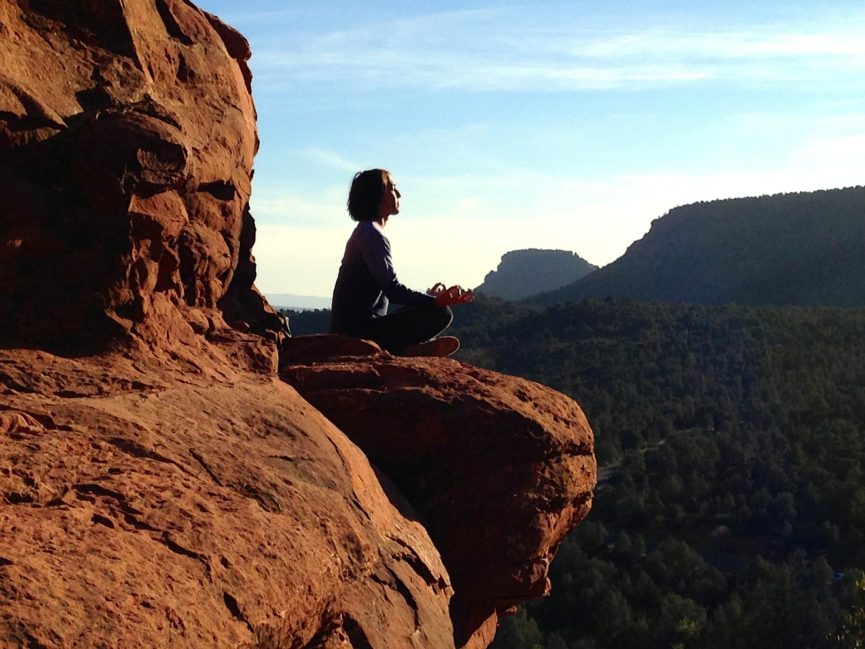Yes it is possible to meditate without a Master…!
Sadhguru, one of the most iconic yogic mentors in India of the recent times once compared the role of a guru in one’s practice to the efficiency that of a torchlight. “If I give you a torchlight, it still does not ensure you are going to find home,” he says. The light can be used to illuminate the path ahead but whether one chooses the right one is left entirely upon him. Likewise, an individual without a torchlight may find vision differently. The sources of light could be many things. It could well be a holiday of 7-days yoga retreat in Nepal -a land of Buddhist meditation, or in this digital age- an inspiring YouTube channel/App like Headspace rather than a ‘guru’ in the true sense of the term.
This concludes the question whether it is possible for one to perform meditation without a master. Answer: ‘Yes’, it is possible! Though, it might be more challenging. Also, practically speaking, following self-led or virtually-guided meditation can save a lot of time and hassle. There are, in fact, a number of meditation techniques that can still be as effective in the absence of a master. For example– body scan meditation, mindfulness, walking meditation, and on goes the list.
Here is to lay out a probable method you can get started with or without a guru–
Set Your Intent: Identify What You Want To Seek Through Your Meditation
Meditation can be an organic process when you set an intention to the practice. Don’t come to the mat arbitrarily. Assess your current life situation and emphasize what you require in terms of internal capacity. Is it patience, concentration, a sense of contentment as opposed to resentment, or more energy and fulfilling sleep? Are you looking for a way out through meditation from abuse, addiction, or other harsh life situation? Keep these goals on the forefront of your mindscape as you meditate to go deeper.
Expand Research: Determine A Specific Meditative Discipline To Follow
Meditation disciplines are often crafted to specific personality types-
- Mindfulness Meditation applies to people who have a short span of concentration.
- An active and athletic person should advisably go for nature walking meditation
- Heartfulness Meditation can do wonders for culturing compassion, empathy, and love as opposed to toxicity
- Nidra Meditation at an outdoorsy location as offered at any fabulous Yoga Teacher Training Nepal
What To Expect: Be Reasonable In Seeking Transformation
Enough being said already about the transformative power of different meditation techniques, let us also focus on how not to expect as to maintain the sanctity of your meditation process. Changing the way you feel can take a long time and you must put your willfulness to test and must go through till the end.
Practice, practice, practice… the benefits are ongoing!
Chart Out Meditation Time: Plan Your Personal Schedule
When you have set your mind to meditate systematically, the first hurdle you will face is going to be how to make the time. Consider two factors when deciding this–
- A time when you are well-rested.
- A time when other activities of your life can be put to pause for at least five minutes, to begin with. You surely can’t meditate with your phone buzzing and people coming in and out of the room.
The first hour of dawn or the brahmamuhurta is a widely accepted time for delving deep into meditation according to various yogic traditions and you can follow the same if it suits you.
How To Take Meditation Off The Mat Into Everyday Life
Meditation can well be an all-pervading process. Perform each activity of the day from taking a shower to living up to your liabilities on your deskbound office time with acute meditative awareness. Be conscious of your breath entering and leaving your body. Be conscious of your passing thoughts, emotional feeling, and sensations. Become a spectator to the drama of your life and take the leash into your own hands.
The Precepts Of the Discipline: Not To Break Ground Rules
Certain ground rules must be adopted to make a discipline really work. For starters, fix a meditation routine that’s not entirely subject to changes. Another idea– tie up your meditation schedule with another daily activity. It could be anything from going to bed at night after a nice long meditative session or brewing your everyday morning cup of warm herbal tea.
Keep A Journal: Review Your Everyday Contemplations
Why is it important to review a meditation journal recording day to day changes? Because it cuts out the pattern of your thoughts, emotions, and changes in health conditions that have taken. Use your very own judgment to route out the negative, the unproductive, or prejudiced contemplations to become a better human being.
Don’t Be Critical: Smile, Breathe, Relax, and Move On With Practice
Do not get hung up on the nitty gritty. It is hardly important to follow a manual tenet of meditation word for word. Do you restart when your mind strays once or twice from the object of meditation? No, simply breathe out, relax, and get on with the process is all!
Leave The Mat Always With Gratitude
Leave the mat with gratitude for this life and the beauty of the one universal divineness we all are a part of.
Bring your two hands joined and collected at your heart.
Namaste!
